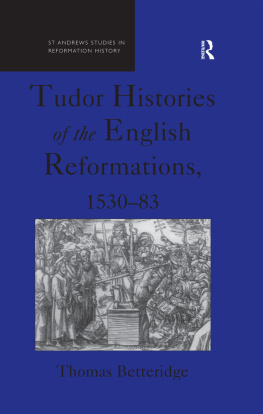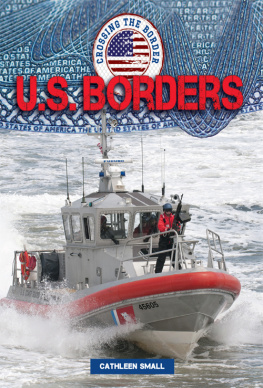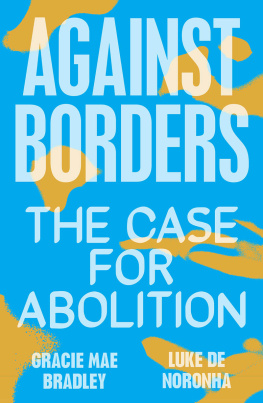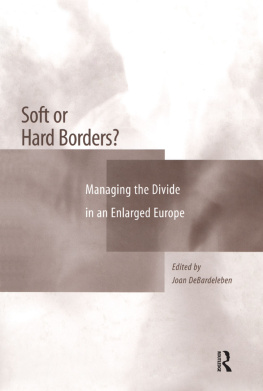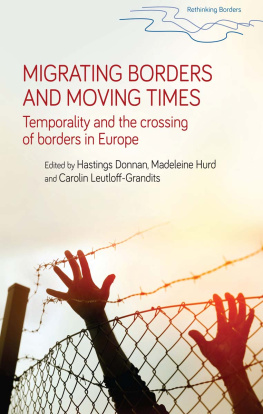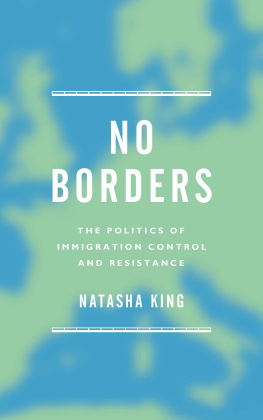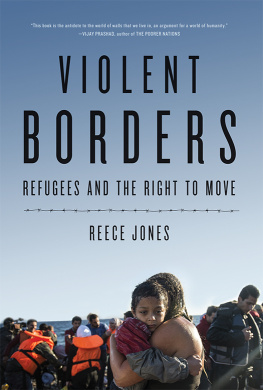Borders and Travellers in Early Modern Europe
First published 2007 by Ashgate Publishing
Published 2016 by Routledge
2 Park Square, Milton Park, Abingdon, Oxon OX14 4RN
711 Third Avenue, New York, NY 10017
Routledge is an imprint of the Taylor & Francis Group, an informa business
Copyright Thomas Betteridge 2007
Thomas Betteridge has asserted his moral right under the Copyright, Designs and Patents Act, 1988, to be identified as the editor of this work.
All rights reserved. No part of this book may be reprinted or reproduced or utilised in any form or by any electronic, mechanical, or other means, now known or hereafter invented, including photocopying and recording, or in any information storage or retrieval system, without permission in writing from the publishers.
Notice:
Product or corporate names may be trademarks or registered trademarks, and are used only for identification and explanation without intent to infringe.
Chapter 6: Copyright Andrew Pettegree.
British Library Cataloguing in Publication Data
Borders and travellers in early modem Europe
1. Travel History 16th century 2. Voyages and travels
History 16th century 3. Travelers History 16th
century 4. Boundaries History 16th century
5. Traveler's writings History and criticism
6. Boundaries in literature
I. Betteridge, Thomas
910.4'09031
Library of Congress Cataloging-in-Publication Data
Borders and travellers in Early Modem Europe/edited by Thomas Betteridge.
p. cm.
Includes index.
ISBN-13: 978-0-7546-5351-6 (alk. paper)
1. Boundaries Philosophy. 2. Europe Boundaries Philosophy.
3. Travel Philosophy. I. Betteridge, Thomas.
JC323.B673 2007
914.04'22dc22
2006030254
ISBN: 978-0-7546-5351-6 (hbk)
CONTENTS
PART 1 Borders
Margaret Healy
Duncan Salkeld
Claire Jowitt
PART 2 Europe
Mike Pincombe
Maria R. Boes
Andrew Pettegree
PART 3 Travellers
David J. Baker
Melanie Ord
Neil L. Whitehead
David J. Baker, University of Hawaii, USA.
Tom Betteridge, Oxford Brookes University, UK.
Maria R. Boes, West Chester University, USA.
Andrew Hadfield, University of Sussex, UK.
Margaret Healy, University of Sussex, UK.
Claire Jowitt, Nottingham Trent University, UK.
Melanie Ord, University of the West of England, UK.
Andrew Pettegree, University of St Andrews, UK.
Mike Pincombe, Newcastle University, UK.
Duncan Salkeld, University of Chichester, UK.
Neil L. Whitehead, University of Wisconsin-Madison, USA.
Introduction: Borders, Travel and Writing
Tom Betteridge
You can be a citizen or you can be stateless, but it is difficult to imagine being a border. (Andr Green)
Early modern Europe was obsessed with borders. It found, imagined and manufactured new borders for its travellers to cross. It celebrated and feared borders as places or states were meanings were created and transformed. In early modern Europe, crossing a border could take many forms. It could mean sailing to the Americas, visiting a hospital or taking a trip through London's sewage system. Borders were places that people lived on, through and against. Some were temporary, like illness, while others claimed to be absolute, like that between the civilized world and the savage, but to cross any of them was an exciting, anxious and often potentially dangerous act.
Early modern Europe tore up borders. Its travellers and writers operated as if existing borders were simply there to be crossed and erased. The discovery of the Americas inaugurated a century of border crossing, while in Europe the invention of the printing press led to the creation of a Europe-wide market that traversed national and linguistic boundaries. These developments were profoundly influenced by humanism, which aspired to create a world of wisdom, a pan-European textual community, without borders, and provided the classical models that early modern travellers used to make sense of the new worlds that they encountered on their travels.
The chapters that make up Borders and Travellers in Early Modern Europe discuss the status of borders and travel in sixteenth-century Europe. Travelling inevitably involves crossing borders. Indeed there is a level at which travel would be without meaning in a borderless world. To travel is to cross borders, and in the process to render them at best potentially redundant and at worst void. When Christopher Columbus crossed the border between Europe and America he tore it up so that it could never be restored. Travel can, however, also reinforce existing borders and lead to the production of new ones. The border that emerged between the Americans and Spanish was intense and violent. The dichotomy between travel and borders, at once antagonistic and supportive, runs through this collection. Its effects can be illustrated by looking briefly at the debate that convulsed early modern Europe over the status of the indigenous populace of the Americas and, in particular, their alleged practice of cannibalism. In the accounts of the New World produced by men like Christopher Columbus, the figure of the cannibal functioned as a point of ideological fixity in world of shifting signifiers. Mary Campbell comments that:
The New World was full of things, but the articulation of them was an awesome linguistic and rhetorical challenge, some times openly shirked and sometimes eluded by rhetorical sleights of hand.
The exotic but also potentially dangerous proteanness, material and linguistic, of the New World is brought up short by the figure of the cannibal as the one sign in the colonial contact zone that could not be consumed by the European traveller.
Postcolonialism and Early Modern Travel
One of the most significant developments in recent years in terms of the study of early modern European culture has been what could be termed the postcolonial turn. A number of critics, including such scholars as Stephen Greenblatt and Anthony Pagden, produced in the early 1990s important studies of the impact of the discovery of the Americas on Europe. These developments in the study of early modern culture have been informed by the emergence in the last twenty years of postcolonialism as a sophisticated theoretical discourse. In the introduction to a recent collection of postcolonial criticism, the editors, Gaurav Desai and Spriya Nair, suggest that:
Postcolonial studies come in several guises. Rereadings of the Euro-American cannon, investigations of the production of colonial stereotypes and the inventions of the other, materialist analyses of social conditions, critical analyses of postcolonial literatures and cultures, theorisations of categories such as subalternity, ambivalence, mimicry and hybridity all these are part of the vast territory of the postcolonial, primarily in the Anglo-American academy.
The field of postcolonial studies as described by Desai and Nair is indeed vast, filled with wondrous growths, exotic sights and strange plants. At its centre, however, is a fundamentally enlightenment commitment to exposing how colonialism worked, and works, as an important step in dismantling colonial oppression and its effects.


